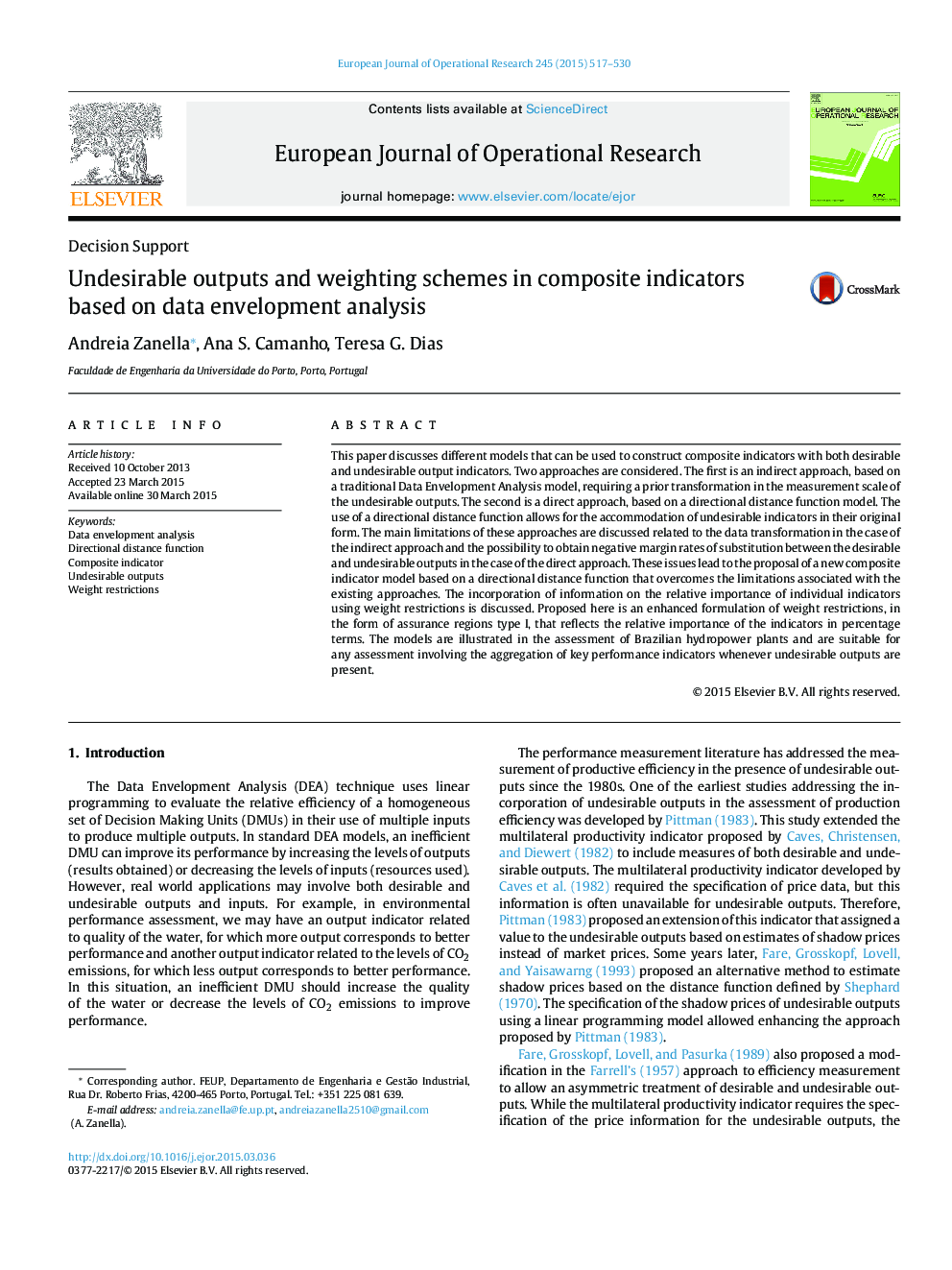| Article ID | Journal | Published Year | Pages | File Type |
|---|---|---|---|---|
| 479526 | European Journal of Operational Research | 2015 | 14 Pages |
•This paper explores DEA-based composite indicators with undesirable outputs.•A new composite indicator model based on a directional distance function is proposed.•The new CI is more suitable to accommodate undesirable outputs than other CI models.•An enhanced specification of ARI weight restrictions is proposed.•The models are illustrated with the assessment of Brazilian hydropower plans.
This paper discusses different models that can be used to construct composite indicators with both desirable and undesirable output indicators. Two approaches are considered. The first is an indirect approach, based on a traditional Data Envelopment Analysis model, requiring a prior transformation in the measurement scale of the undesirable outputs. The second is a direct approach, based on a directional distance function model. The use of a directional distance function allows for the accommodation of undesirable indicators in their original form. The main limitations of these approaches are discussed related to the data transformation in the case of the indirect approach and the possibility to obtain negative margin rates of substitution between the desirable and undesirable outputs in the case of the direct approach. These issues lead to the proposal of a new composite indicator model based on a directional distance function that overcomes the limitations associated with the existing approaches. The incorporation of information on the relative importance of individual indicators using weight restrictions is discussed. Proposed here is an enhanced formulation of weight restrictions, in the form of assurance regions type I, that reflects the relative importance of the indicators in percentage terms. The models are illustrated in the assessment of Brazilian hydropower plants and are suitable for any assessment involving the aggregation of key performance indicators whenever undesirable outputs are present.
